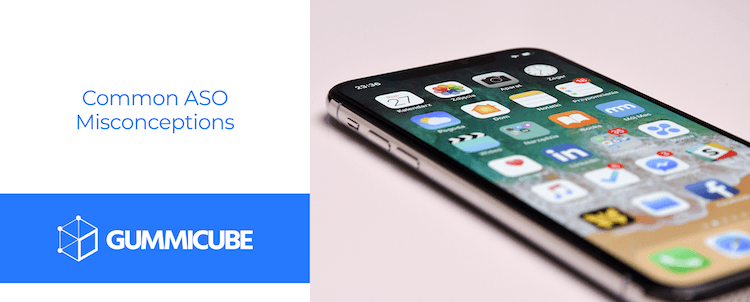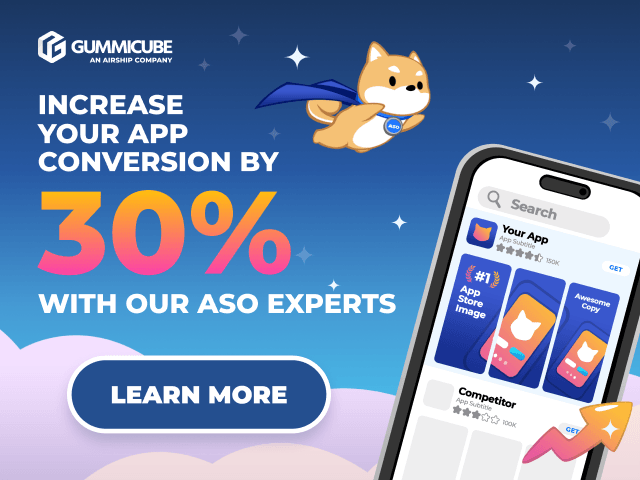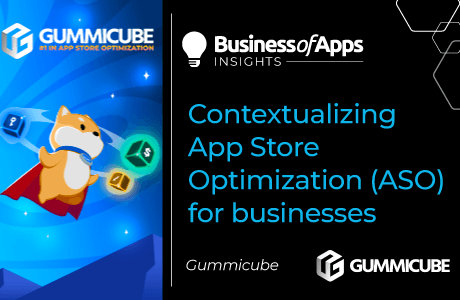
The iOS App Store and Google Play Store have evolved over the years, and App Store Optimization has changed with them. An ASO strategy that worked well in 2011 will be out of date today. Something that has remained consistent, however, are several misconceptions about App Store Optimization. Understanding what ASO is, how it works and what needs to be done to achieve success will put you in a better position to grow your app.
Misconception 1: “Web & Mobile Data Work the Same”
Web keyword volumes do not reflect how users search on the app stores. In spite of that, it is still a common practice for some companies to use web data to determine what keywords they should target.
For instance, the Google Keyword Planner is utilized for web keyword research but should not be used for mobile search keywords. The assumption is that if people are searching for something on Google, they are likely to search for the same thing on the Google Play Store. That is incorrect, as there is only a 20% overlap between web and mobile search trends. Using web data for mobile research, or tools that incorporate web data into their mobile keyword suggestions, will provide an inaccurate picture of user search behavior. There is no substitution for real mobile search data.
User behavior can vary significantly depending on if they are searching in the app stores or on an online search engine. When conducting ASO research, developers should use data based off keyword volumes specifically tied to organic app store search behavior. This will help them truly understand what keywords users are searching for in the app stores and guide their ASO strategy.
Misconception 2: “Keyword Difficulty Scores Should Determine Keyword Selection”
There is a belief that the number of apps ranking for a keyword should be taken into account when determining keyword difficulty. It may seem that keywords with more total apps populating are more popular and have higher search volume, but that is not necessarily the case. Moreover, the search volume of a term on its own is not indicative of whether or not it is a ‘good’ or ‘bad’ term to target, as it does not account for the relevancy of the term to a given app.
Keywords should not be determined by the number of apps ranking for a given term, but by how relevant it is to an app. This is because relevance is the determiner behind whether an app ranks well for a given keyword or not. The more relevant an app is for a keyword, the better its rank will be. A keyword difficulty score may report that a keyword is too difficult to rank for when the app actually has a major advantage given its relevance for that keyword.
Misconception 3: “Creative Changes Should Always Be Dramatic”
When you change customer-facing aspects, such as the creative set, you need to understand what the biggest driver in conversion may be. If you change too many elements at once, you will not be able to gain that insight. There is a misconception that when developers A/B test new creatives, that the changes must be dramatic. In reality, that can make it difficult to understand what specific details drive the change in conversion during the test.
Instead of testing dramatic changes, marketers should run iterative testing. Each variant should have subtle changes, such as the handset orientation, color palettes or the callout text messaging and design.
By taking an iterative approach, it will be easier to gain actionable learnings. This can determine what works and what does not down to the minute details, rather than changing multiple elements and hoping each one is an improvement.
Conclusion
Understanding the misconceptions of App Store Optimization can help developers avoid some of the biggest pitfalls. Although ASO has been around for years, there are still misconceptions around how to execute a strategy. If a developer or marketer bases their ASO decisions on these misconceptions, they can limit their own app growth.
Common misconceptions include using web search keyword volume, relying on difficulty scores for keyword selection and testing dramatic creative changes. These misconceptions can lead to bad decision making and should be avoided. In order to achieve the greatest possible success on the App Store and Play Store, it is critical that developers use the most accurate data and best methodology available.











